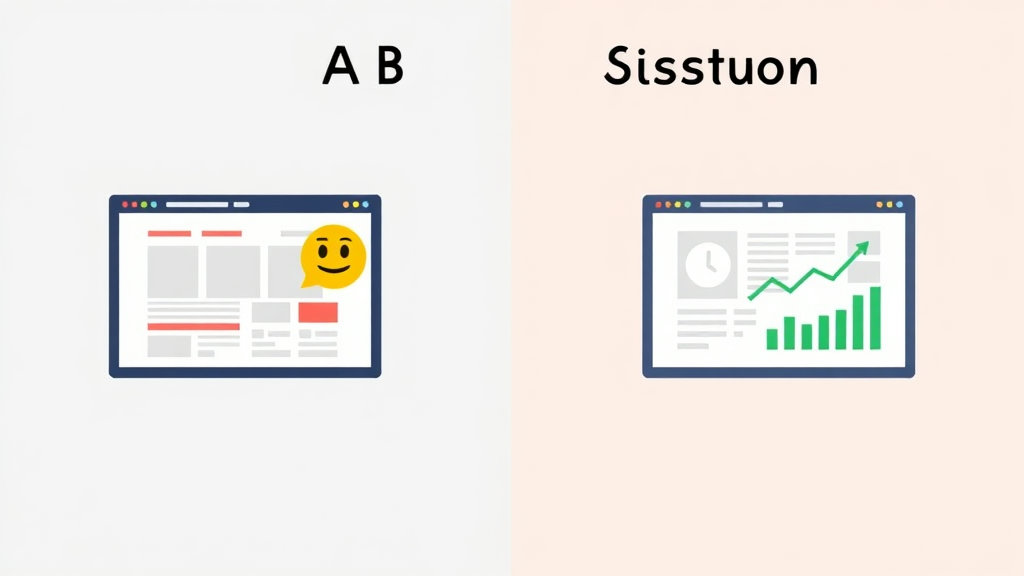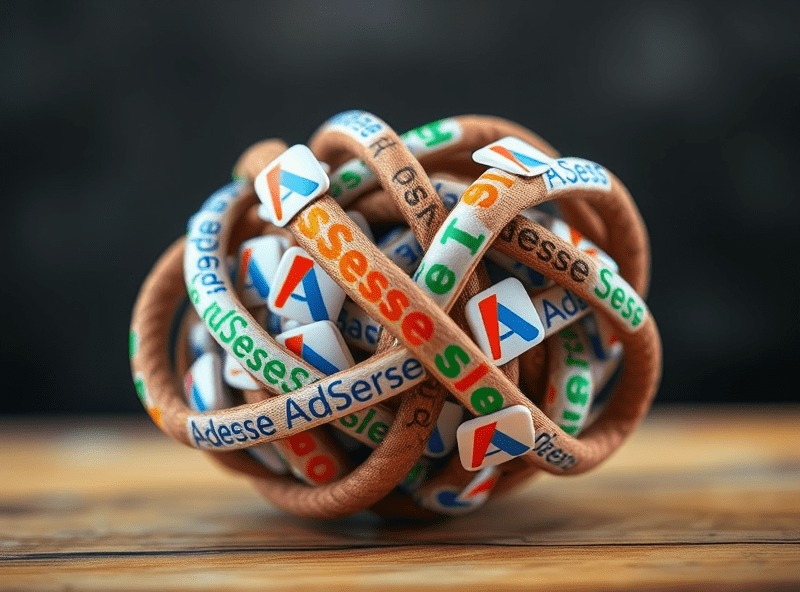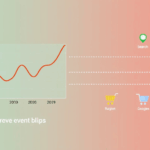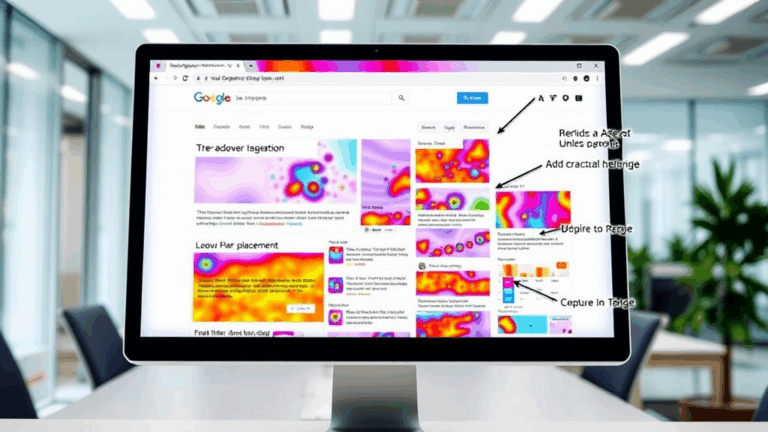AdSense A-B Testing: Real Config Fails and Fix Wins
Running Multiple A-B Tests Without Losing Your Mind
So, you start optimistically: “I’ll run simultaneous A-B tests—one for ad size, one for placement.” Seems harmless, right? Then AdSense quietly eats your logic alive behind the scenes.
Here’s the thing. The AdSense Experiments UI lets you think you’re comparing two versions. But there’s no obvious guardrail stopping you from running multiple overlapping tests that touch the same ad units. So if you don’t methodically isolate your variables, you’ll end up with serpentine traffic paths and the kind of stats that give you confidence in completely the wrong config.
I once had a sidebar leaderboard test running, and someone added a homepage top banner test without knowing it modified the same ad slot via auto ads. Data was cooked. I got increased CPM from B, and lowered RPM overall. Why? Because the banner test leaked overlap.
If you’re doing multiple tests:
- Map every test against the ad unit IDs first.
- Don’t rely on AdSense UI descriptions—click into the code view.
- Disable auto ads for test pages or isolate them with query flags.
If your experiment graphs start looking oddly uniform, especially across unrelated units, recheck whether your test boundaries are actually isolated.
What Google Doesn’t Tell You About A/B Test Cooldowns
After running a test and pushing variant B live based on the data (yay, it won), you’d think you could immediately spin up a Variant C to compare. Surprise: some ad settings have this unofficial cooldown period baked in where new experiments don’t behave as expected for a while.
Specifically, when you change layout-based ad formats (like in-article or matched content), AdSense may take over a week to stabilize delivery on the new default before it lets your next config serve evenly in a new test.
I’ve been burned by this. I ran a successful B test, promoted B to default, then launched a B-vs-C test the next morning. For three days, traffic split claimed to be 50-50, but my logs showed 80% of actual impressions still favored B. Manual cache-clearing didn’t help—it eventually leveled out on its own around day five.
No doc mentions this. But I’ve repeated the issue on multiple accounts. Experiments aren’t just user-facing logic; there’s backend delivery pacing that’s slower than advertised.
Auto Ads Break A/B Test Integrity In Weird Ways
Auto ads and A/B tests do not like each other. I’ll die on this hill.
Let’s say you’re testing placement A vs. placement B. But you still have auto ads enabled on the site. AdSense’s machine decides to inject a sticky anchor ad halfway through your scroll. This muddies your test because that anchor ad delivers an unexpected extra impression—frequently on the variant B path, because it uses more vertical space and nudges scroll behavior differently.
I’ve had two variants where the only difference was rearranging a single ad unit from above-the-fold to mid-article. Auto ads filled in three extra slots on variant B due to different heights and DOM layout timing. It absolutely skewed results by bumping RPM past any legitimate difference between layouts.
The fix: during A/B tests, disable auto ads entirely. If that’s not feasible across your whole site, create a dedicated test subdomain or use query param controls to suppress auto ads on test pages.
Don’t let machine learning make its own rules during your experiments. It’s terrible at being predictable when you’re trying to measure causality.
Manual Traffic Splits Give You Real Control (But It’s Work)
Trusting AdSense’s built-in experiments panel is fine… until it’s not. If you want real control over which users get which version, you gotta roll your own.
I use a basic cookie-based system via Cloudflare Workers to handle the split. Origin traffic gets evaluated based on cf-ray or a hash of user-agent plus timestamp. Bucket A visitors get redirected with ?v=a, and same for B. Then I write the variant into a cookie so returning sessions stay consistent.
This gets around one major hidden flaw with AdSense experiments: sessions aren’t always sticky. Same user, two browser tabs 30 mins apart? Might get different variants. And Google counts both.
// Cloudflare Worker logic snippet
const id = hash(request.headers.get("User-Agent") + Date.now());
const variant = id % 2 === 0 ? 'a' : 'b';
return Response.redirect(`https://example.com/page?v=${variant}`);
This method sucks to maintain, but is the only way I trust A/B results when testing page-wide layout changes. You control attribution, caching, even analytic injection.
Variants in Experiments Are NOT Treated Equally in Real-Time Bidding
Here’s another behavioral bug I didn’t believe until I saw the numbers baked into my GAM logs: even though A and B in the AdSense experiment were getting 50-50 user traffic, AdSense sent significantly more bids to version A’s ad units than B’s—at least for the first 12 hours after launch.
From what I could piece together, it seems AdSense propagates ad demand pathways slightly faster for whichever variant is the currently published version (before or during the test). That means early-stage B variants might not get full programmatic bid access until they’re seen as stable enough.
The real kicker? If your test is short (less than two days), you might mistakenly identify A as the better performer because B never received fair market competition. It’s like comparing two stores, but you kept one of them invisible for most tourists.
Bottom line: always let your variants run for at least 3 full days — I usually aim for 5 — before considering any revenue-based result valid. If your result flips at hour 72, this is probably why.
My Actual Spreadsheet Setup for Tracking A/B Tests
This isn’t elegant, but it’s survived nine months without me regretting it.
I track each test individually on its own tab inside a Google Sheet. Logged manually, because I simply don’t trust AdSense’s built-in experiment logging to persist, especially if the account gets changes down the road or someone resets the dashboard.
Each test tab includes:
- Change description (show/hide sidebar ad)
- Page URLs involved
- Start and end timestamp
- Estimated traffic per variant (from GA4)
- CPM + RPM weekly averages (imported via Looker Studio connector)
- Qual notes: user session scroll behavior, click heatmaps
I know it’s overkill. But when a client emails me 60 days later saying their revenue dropped post-launch, I have a record of literally what changed — to the page, layout, and ad provider. Debugging revenue trends without time-marked layout shifts is like grepping logs without a timestamp column.
Matched Content Units Don’t Split Test Cleanly
Matched content still exists (for some accounts), and it’s downright useless for A/B tests unless you know what it’s injecting.
When you toggle matched content on or off inside an experiment, AdSense doesn’t just switch the unit; it may also alter the slot size, DOM behavior, and auxiliary fill types (like native-style text ads). There’s no flag for “matched content with identical size or layout,” so your experiment mashes three changes into one.
“Variant B did better at RPM but tanked time-on-page.”
That’s what I saw in November, running a test that turned on matched content at the bottom of longer blog posts. RPM bumped slightly, but bounce rate ticked up and average session duration halved. Turns out the new unit pushed down my mailing list CTA. Again, no documentation told me the matched content injection was changing container height and delaying my footer loads.
Undocumented edge case? When you disable matched content and rerun the page as a new variant, lazy load doesn’t always re-trigger on reflow, unless the matched content unit was the last thing to render originally. That bug took me a Saturday afternoon to find.
Using Google Optimize with AdSense Gets Hairy Fast
If you’ve tried layering Google Optimize on top of an AdSense A/B test setup, I know your pain. On paper, it’s great: client-side DOM tweaks, flexible bucketing rules. In practice? More chaos than clarity.
Problem one: Optimize runs after the initial DOM is built, and Google ad code often loads during that exact same pass. If your Optimize variant changes an ad container’s attributes — margin, location, width — after AdSense has already sized and auctioned the ad… too late. You get the wrong layout with the original bid.
Aha discovery? I found this bug in Chrome DevTools watching the ad iframe fill. The data-ad-slot property matched the expected variant, but the CSS padding-top came from the wrong version. Optimize re-applied DOM on variant load, but the ad had already filled pre-update.
Safe fix here? If you must use Optimize, delay AdSense script load until after variant has rendered. That means moving your ad script insert after window.onload or using mutation observers to detect variant flags before injecting ad units.
This adds about 300ms latency, but it’s the only way to reliably split without race conditions between layout logic and AdSense fill behavior.
How I Accidentally Killed Mobile Revenue With a “Winning” Test
This one still haunts me. We ran an A/B test on a mobile recipe site comparing sticky bottom banners vs inline after-second-paragraph units. Test B won by a small margin on RPM. I switched to B across mobile. Revenue dropped within a week, dramatically.
What was wrong? Our initial test didn’t capture long-page behavior. Turns out those who scrolled more (and therefore saw more inline units) were actually far fewer in number. Most bounced early, and those users performed better with visible sticky banners. Our A/B test ignored that.
Behavioral segmentation by scroll depth would’ve exposed this, but AdSense doesn’t do that natively. I only caught it when hooking into GA4 to bind scroll thresholds into custom dimensions.
So now: I never declare a “winner” test anymore until I crossmatch the results with behavioral patterns. Even if RPM says B wins, if time-on-page or interaction shifts drastically — that’s not a win. That’s a trap.














